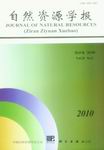Special Forum
ZHAO Xiao-feng, HUANG Xian-jin, CHEN Yi, CHEN Zhi-gang
Urban land intensive use is regarded as an important content for the research of urban land use change. Understanding the mechanism, process, and effects of urban land intensive use is helpful to optimize the urban spatial structure, improve the efficiency of urban land use, ease the pressure of urban development brought by resource and environmental constraints, and promote sustainable urban development. In this paper, scale, contents and methods which were presented in urban land intensive use research are concluded elaborately: 1) There are three kinds of scale in spatiality. Macro scale contains whole country, urban agglomeration and provinces; medium scale includes cities and functional region; while micro scale indicates parcel. Another scale is time which contains section data and panel data, and it maybe more valuable to analyse the variation and developing tendency of urban land intensive use with panel data. 2) As for the contents, connotation, theories, evaluation, driving forces, effects and approaches are mainly discussed in the literatures. Urban land intensive use has multifunctional and dynamic characteristics, and pays more attention to land use structure, land use intensity and land use efficiency. The evaluation of urban land intensive use is widely concerned, accordingly achieves considerable achievement, which mainly includes evaluation index system, spatial differentiation, comparisons between different industry trades and potential estimation. The driving forces of urban land intensive use are affected by spatial scales and time scales. The effects and approaches of urban land intensive use are weakly concerned, especially in China. 3) Some methods have been applied in researches, such as statistic analysis, econometric analysis, dynamic process model and spatial analysis. In addition, PSR model, DPSIR model and life cycle assessment are also helpful to the research. Although much progress has been made in theory and practice of urban land intensive use research, and some important results have been obtained, there still have certain problems in previous researches. Some suggestions which help to develop the research are as follows: Firstly, multi-level, multi-scale and time series research should be adequately emphasized to realize characteristics of urban land intensive use. Secondly, the theoretical foundation, intrinsic mechanism, dynamic process and comprehensive effects should be studied deeply. Lastly, econometric analysis, dynamic process model and spatial analysis should be applied extensively.
